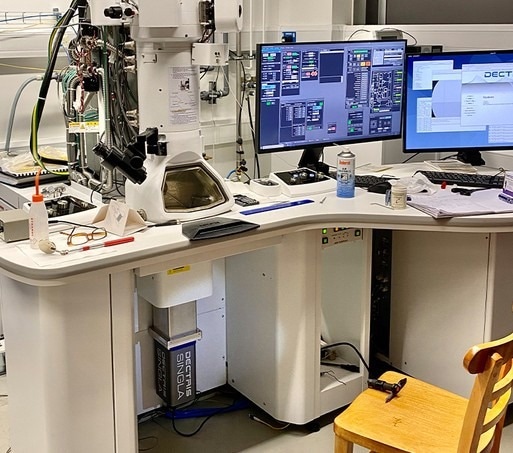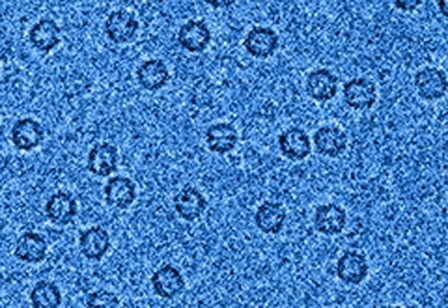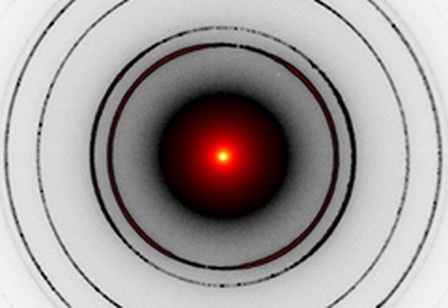DECTRIS SINGLA® detector is considered a quick, hybrid-pixel electron detector used for many life science applications.
The detector is a hybrid-pixel electron-counting camera with a sensitive area of approximately 1000 × 1000 pixels. It is ideal for Micro-Electron Diffraction (microED) and Cryo-Electron Microscopy (cryoEM) applications.
Experiments performed in single-particle analysis and cryo-electron tomography benefit hugely from this detector speed. SINGLA detector’s quick readout speed (surpassing 2,000 frames per second) is integrated with its excellent dynamic range, making it the perfect detector for small-molecule and 3D micro-crystallography.
The detector is bottom-mounted and compatible with JEOL and Thermo Fisher Scientific Transmission Electron Microscopes (TEM).
Benefits include:
- Quick and precise: detector’s direct electron detection at a rapid frame rate enables optimal data collection at lower energies (100 keV), allowing low-dose electron microscopy.
- Compatible: DECTRIS SINGLA® detector is compatible with the SerialEM program.
Detector specifications
Source: DECTRIS Ltd.
| . |
. |
| Number of pixels (W x H) |
1028 x 1062 |
| Active area (W x H) [mm²] |
77.1 x 79.7 |
| Pixel size (W x H) [µm²] |
75 x 75 |
| Sensor material |
Silicon (Si) |
| Energy range [keV] |
5.0 - 200 |
| Frame rate (max.) [Hz] |
2250 (16-bit); 4500 (8-bit) |
| Count rate (max.) [el/s/pixel] |
107 |
| Detective Quantum Efficiency, DQE(0) |
0.9 at 100 kV, 0.8 at 200 kV |
| Detector mounting |
Bottom, on-axis |
*All specifications are subject to change without notice.
Case study
Decreasing electron energies from the current standard to 100 keV provides cost savings and potential enhanced imaging for Cryo-Electron Microscopy (cryoEM). Hybrid-pixel direct electron detectors could play a significant role in this revolution.

Image Credit: DECTRIS Ltd.
Techniques
Cryo-electron microscopy (cryoEM)
DECTRIS detectors allow users to pull the most information regarding the structure of a biological molecule, with the least radiation damage.

Image Credit: DECTRIS Ltd.
Micro-electron diffraction (microED)
Users can capture every bit of data from their samples with the help of quick, radiation-hard, and hybrid-pixel electron detectors.

Image Credit: DECTRIS Ltd.